“High post” Capes, also known as “kneewall” capes are a variation of the Cape house dating back to the 18th Century, but came into their own from the 1830’s until the end of the 19th Century. Unlike traditional capes, in which the roof line begins just above the lower windows, the post and beam framing in a high-posted cape extends vertically past the first floor, increasing usable space on the second floor.
The knee wall on the second floor also created room for larger soffits, wider frieze boards and fenestration with small low windows. Ornamentation in early high posted capes tended to be minimal, but in the 19th Century featured elaborate doorway, window and cornice trim of the Greek Revival, Italianate, Victorian and Colonial Revival eras.
Nineteenth Century high-post Capes are found in several Ipswich neighborhoods, including “Ipswich Village,” East, Linebrook, Liberty and Maple Streets.
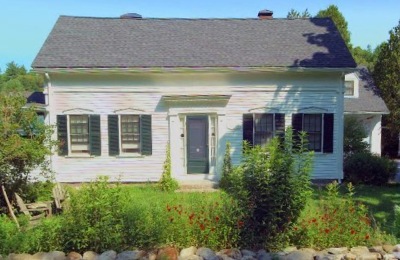 91 Old Right Road, the Jacob Potter House (c. 1845) - This property is in the vicinity of several early Potter family homesteads. With wide exterior casings and pedimented window heads, the house is one of the more elaborate Greek Revival cottages in Linebrook.… Continue reading 91 Old Right Road, the Jacob Potter House (c. 1845)
91 Old Right Road, the Jacob Potter House (c. 1845) - This property is in the vicinity of several early Potter family homesteads. With wide exterior casings and pedimented window heads, the house is one of the more elaborate Greek Revival cottages in Linebrook.… Continue reading 91 Old Right Road, the Jacob Potter House (c. 1845) 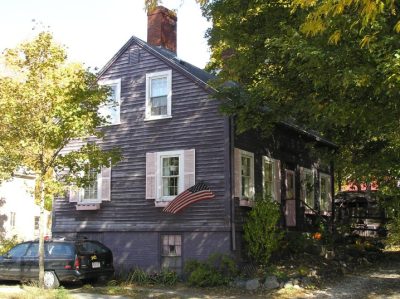 89 High Street, the Moses Jewett House (1830) - Moses Jewett was born in Ipswich, Mass., March 15, 1778 to John Cole Jewett and Elizabeth Smith, whose home stands at 93 High Street. … Continue reading 89 High Street, the Moses Jewett House (1830)
89 High Street, the Moses Jewett House (1830) - Moses Jewett was born in Ipswich, Mass., March 15, 1778 to John Cole Jewett and Elizabeth Smith, whose home stands at 93 High Street. … Continue reading 89 High Street, the Moses Jewett House (1830) 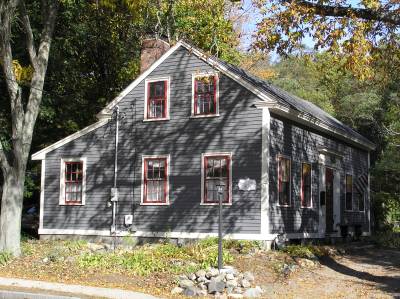 87 High Street, the Sewall Jewett House (1830) - The heirs of John Lord sold the lot at 87 High St. to Sewall P. Jewett in 1830, which is the year in which the house is believed to have been built. At one time, this side of High Street was lined with homes owned by members of the Jewett Family.… Continue reading 87 High Street, the Sewall Jewett House (1830)
87 High Street, the Sewall Jewett House (1830) - The heirs of John Lord sold the lot at 87 High St. to Sewall P. Jewett in 1830, which is the year in which the house is believed to have been built. At one time, this side of High Street was lined with homes owned by members of the Jewett Family.… Continue reading 87 High Street, the Sewall Jewett House (1830) 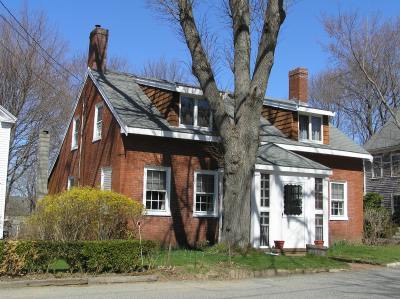 8 Woods Lane, the James Peatfield House (1833) - James Peatfield purchased this lot on what was then called Fruit Lane in 1833, one of the earliest brick capes in Ipswich. He sold the house to Asa Kinsman in 1859, and built a large home at 46-48 Washington Street by 1860.… Continue reading 8 Woods Lane, the James Peatfield House (1833)
8 Woods Lane, the James Peatfield House (1833) - James Peatfield purchased this lot on what was then called Fruit Lane in 1833, one of the earliest brick capes in Ipswich. He sold the house to Asa Kinsman in 1859, and built a large home at 46-48 Washington Street by 1860.… Continue reading 8 Woods Lane, the James Peatfield House (1833) 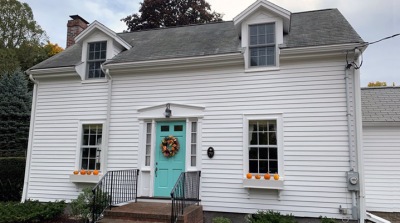 79 East St., the Curran House (c. 1870) - The 1872 Ipswich map shows a house with this configuration with the name T. Curran. Two acres "with the buildings thereon" at or near this location was sold for $100 by Timothy and Julia Curran in 1859 to Israel K. Jewett, who already owned adjoining property.… Continue reading 79 East St., the Curran House (c. 1870)
79 East St., the Curran House (c. 1870) - The 1872 Ipswich map shows a house with this configuration with the name T. Curran. Two acres "with the buildings thereon" at or near this location was sold for $100 by Timothy and Julia Curran in 1859 to Israel K. Jewett, who already owned adjoining property.… Continue reading 79 East St., the Curran House (c. 1870) 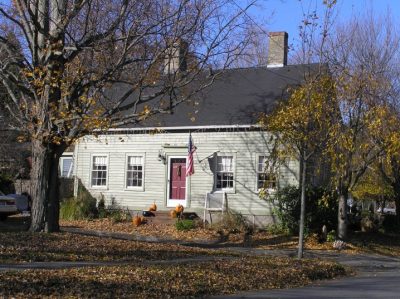 78 Washington Street, the Daniel Haskell House (1835) - The Federal trim and substantial chimneys identify this house as perhaps the earliest of the story-and-one-third 19th century cottages on Linebrook. It is uncertain which Daniel Haskell Sr. or Jr. was the owner. Records show that both died of dementia.… Continue reading 78 Washington Street, the Daniel Haskell House (1835)
78 Washington Street, the Daniel Haskell House (1835) - The Federal trim and substantial chimneys identify this house as perhaps the earliest of the story-and-one-third 19th century cottages on Linebrook. It is uncertain which Daniel Haskell Sr. or Jr. was the owner. Records show that both died of dementia.… Continue reading 78 Washington Street, the Daniel Haskell House (1835) 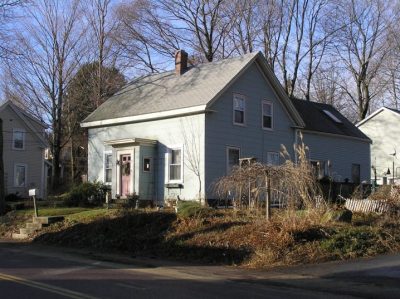 7 Liberty St., the John W. and Annie M. Lord House (c. 1867) - The house at 7 Liberty St. first appears in the 1872. and was first owned by John W. Lord and his wife Annie M. Pingree.… Continue reading 7 Liberty St., the John W. and Annie M. Lord House (c. 1867)
7 Liberty St., the John W. and Annie M. Lord House (c. 1867) - The house at 7 Liberty St. first appears in the 1872. and was first owned by John W. Lord and his wife Annie M. Pingree.… Continue reading 7 Liberty St., the John W. and Annie M. Lord House (c. 1867)  51 Linebrook Road, the Hart House (1678) - The oldest parts of the Hart House were apparently constructed in 1678-80 by Samuel Hart, the son of Thomas Hart, an Irish tanner who arrived in Ipswich in 1637. The two oldest rooms are exact duplicates of the originals, which were moved to museums in the early 20th Century.… Continue reading 51 Linebrook Road, the Hart House (1678)
51 Linebrook Road, the Hart House (1678) - The oldest parts of the Hart House were apparently constructed in 1678-80 by Samuel Hart, the son of Thomas Hart, an Irish tanner who arrived in Ipswich in 1637. The two oldest rooms are exact duplicates of the originals, which were moved to museums in the early 20th Century.… Continue reading 51 Linebrook Road, the Hart House (1678) 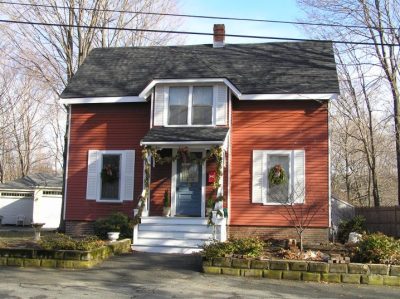 5 Maple Avenue, the Baxter-Campbell House (1890) - This small house features chamfered posts, brackets, and spindle friezes. The houses at 3 and 5 Newmarch Street in Ipswich are identical to 5 Maple Ave., all constructed between 1870 and 1890. … Continue reading 5 Maple Avenue, the Baxter-Campbell House (1890)
5 Maple Avenue, the Baxter-Campbell House (1890) - This small house features chamfered posts, brackets, and spindle friezes. The houses at 3 and 5 Newmarch Street in Ipswich are identical to 5 Maple Ave., all constructed between 1870 and 1890. … Continue reading 5 Maple Avenue, the Baxter-Campbell House (1890)  5 Linebrook Rd., the Richard Lane House (1851) - Richard Rogers Lane built the house in 1851, He died in 1858, and his only child, Etta, inherited the house. which is mentioned in the 1898 deed when she sold it to Charles W. Woodbury. … Continue reading 5 Linebrook Rd., the Richard Lane House (1851)
5 Linebrook Rd., the Richard Lane House (1851) - Richard Rogers Lane built the house in 1851, He died in 1858, and his only child, Etta, inherited the house. which is mentioned in the 1898 deed when she sold it to Charles W. Woodbury. … Continue reading 5 Linebrook Rd., the Richard Lane House (1851) 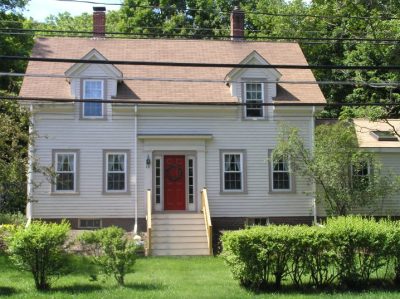 48 East St., the Tyler Caldwell house (1860) - Tyler Caldwell was "a man of thrift and industry, and amassed a comfortable property; respected in the town and well-beloved in the neighborhood where he lived."… Continue reading 48 East St., the Tyler Caldwell house (1860)
48 East St., the Tyler Caldwell house (1860) - Tyler Caldwell was "a man of thrift and industry, and amassed a comfortable property; respected in the town and well-beloved in the neighborhood where he lived."… Continue reading 48 East St., the Tyler Caldwell house (1860) 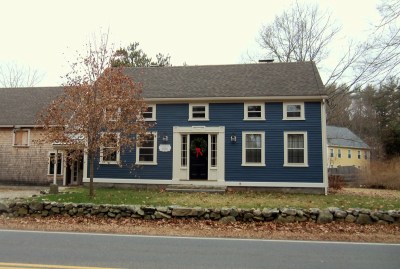 419 Linebrook Rd., the Eliza Howe Perley House (1840) - This house was constructed by William Perkins Perley shortly after his marriage to Eliza Howe, and was described as "beautiful of situation" and picturesque. Mrs. and Mrs. Perley divorced in 1845, and she acceded to ownership and managed the farm, living there until over 90 years of age.… Continue reading 419 Linebrook Rd., the Eliza Howe Perley House (1840)
419 Linebrook Rd., the Eliza Howe Perley House (1840) - This house was constructed by William Perkins Perley shortly after his marriage to Eliza Howe, and was described as "beautiful of situation" and picturesque. Mrs. and Mrs. Perley divorced in 1845, and she acceded to ownership and managed the farm, living there until over 90 years of age.… Continue reading 419 Linebrook Rd., the Eliza Howe Perley House (1840) 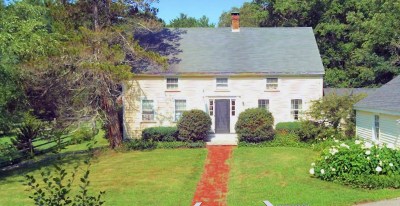 411 Linebrook Rd. (1938) - This house is said to have been constructed in 1938 to resemble the house at 419 Linebrook, incorporating similar features of the Greek Revival Vernacular style.… Continue reading 411 Linebrook Rd. (1938)
411 Linebrook Rd. (1938) - This house is said to have been constructed in 1938 to resemble the house at 419 Linebrook, incorporating similar features of the Greek Revival Vernacular style.… Continue reading 411 Linebrook Rd. (1938) 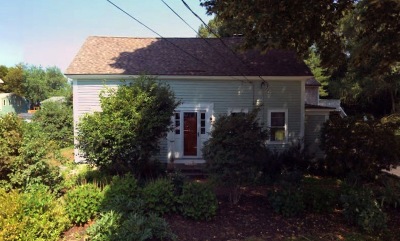 395 Linebrook Rd., the Alvin T. Guilford House (1835) - This house is one of several story-and-one-third cottages constructed in Linebrook in the first half of the 19th century. Alvin T. Guilford, who lived here throughout the second half of the 19th century, was a farmer and shoemaker.… Continue reading 395 Linebrook Rd., the Alvin T. Guilford House (1835)
395 Linebrook Rd., the Alvin T. Guilford House (1835) - This house is one of several story-and-one-third cottages constructed in Linebrook in the first half of the 19th century. Alvin T. Guilford, who lived here throughout the second half of the 19th century, was a farmer and shoemaker.… Continue reading 395 Linebrook Rd., the Alvin T. Guilford House (1835) 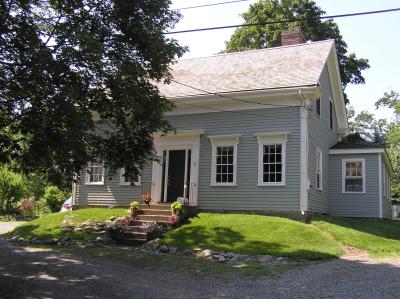 37 Summer Street, the William H. Jewett House (b.1872) - The elegant Cape Cod Colonial at 37 Summer Street first appears as the W. Jewett house in the 1872 Ipswich map, although the town website lists the date of construction as 1825.… Continue reading 37 Summer Street, the William H. Jewett House (b.1872)
37 Summer Street, the William H. Jewett House (b.1872) - The elegant Cape Cod Colonial at 37 Summer Street first appears as the W. Jewett house in the 1872 Ipswich map, although the town website lists the date of construction as 1825.… Continue reading 37 Summer Street, the William H. Jewett House (b.1872) 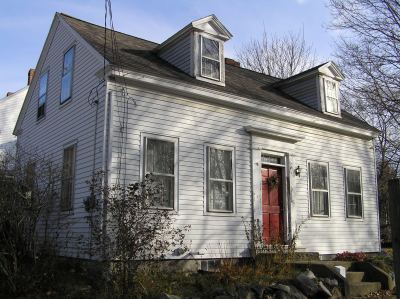 35 Mineral Street, the Smith House (c. 1835) - The Ipswich Assessors map shows the date of construction as 1823, but it first appears in the 1856 Ipswich map, and continues into the 20th Century as the Smith house.… Continue reading 35 Mineral Street, the Smith House (c. 1835)
35 Mineral Street, the Smith House (c. 1835) - The Ipswich Assessors map shows the date of construction as 1823, but it first appears in the 1856 Ipswich map, and continues into the 20th Century as the Smith house.… Continue reading 35 Mineral Street, the Smith House (c. 1835)  347 Linebrook Road, the Foster-Conant house (1840) - This building is one of several story-and-one-third 19th century cottages in Linebrook, a popular building type of the mid-19th century. Cyrus Conant, the second owner is said to have been the strongest man in town and "could cut and pile four cords of wood in a day."… Continue reading 347 Linebrook Road, the Foster-Conant house (1840)
347 Linebrook Road, the Foster-Conant house (1840) - This building is one of several story-and-one-third 19th century cottages in Linebrook, a popular building type of the mid-19th century. Cyrus Conant, the second owner is said to have been the strongest man in town and "could cut and pile four cords of wood in a day."… Continue reading 347 Linebrook Road, the Foster-Conant house (1840) 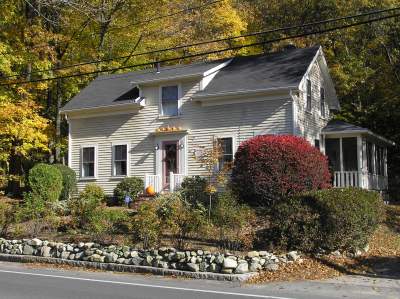 327 High Street, the Annie Donovan House (1873, reconstructed in 1914) - The 1873 house at this location burned in 1914, but was rebuilt with the same appearance of a one-and-one-half story cottage of the 19th Century.… Continue reading 327 High Street, the Annie Donovan House (1873, reconstructed in 1914)
327 High Street, the Annie Donovan House (1873, reconstructed in 1914) - The 1873 house at this location burned in 1914, but was rebuilt with the same appearance of a one-and-one-half story cottage of the 19th Century.… Continue reading 327 High Street, the Annie Donovan House (1873, reconstructed in 1914)  315 High Street, the Apphia Jewett House (1834) - The land in the vicinity of 315 High Street was owned by the Jewett family since it was purchased by Captain Moses Jewett in the third quarter of the 18th century. Olive Jewett married Captain George W. Howe of Rowley on November 26, 1835 and Captain Howe built upon the lot.… Continue reading 315 High Street, the Apphia Jewett House (1834)
315 High Street, the Apphia Jewett House (1834) - The land in the vicinity of 315 High Street was owned by the Jewett family since it was purchased by Captain Moses Jewett in the third quarter of the 18th century. Olive Jewett married Captain George W. Howe of Rowley on November 26, 1835 and Captain Howe built upon the lot.… Continue reading 315 High Street, the Apphia Jewett House (1834)  290 Linebrook Rd. the Chapman-Small House (c. 1840) - The two-story farmhouse was purchased by Bradley Palmer from the Small family in the early 20th century and became part of his large country estate. It formerly served as forest headquarters and residence for the park superintendent. … Continue reading 290 Linebrook Rd. the Chapman-Small House (c. 1840)
290 Linebrook Rd. the Chapman-Small House (c. 1840) - The two-story farmhouse was purchased by Bradley Palmer from the Small family in the early 20th century and became part of his large country estate. It formerly served as forest headquarters and residence for the park superintendent. … Continue reading 290 Linebrook Rd. the Chapman-Small House (c. 1840) 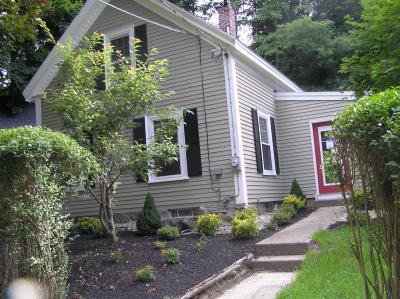 17 Spring Street, the David Dow House (1857) - This is the childhood home of reknowned Ipswich painter Arthur Wesley Dow.… Continue reading 17 Spring Street, the David Dow House (1857)
17 Spring Street, the David Dow House (1857) - This is the childhood home of reknowned Ipswich painter Arthur Wesley Dow.… Continue reading 17 Spring Street, the David Dow House (1857) 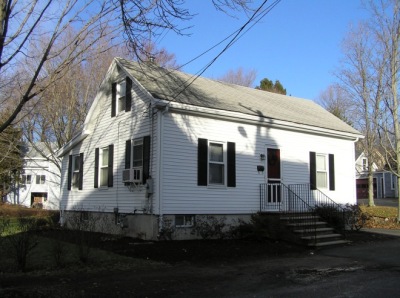 17 Liberty St., the Blaisdell H0use (c.1870) - The 1872 Ipswich map shows the owner of this house as "L. Blaisdell."… Continue reading 17 Liberty St., the Blaisdell H0use (c.1870)
17 Liberty St., the Blaisdell H0use (c.1870) - The 1872 Ipswich map shows the owner of this house as "L. Blaisdell."… Continue reading 17 Liberty St., the Blaisdell H0use (c.1870) 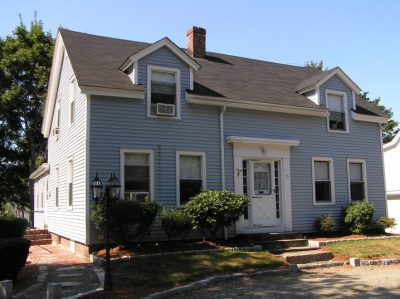 16 Maple Avenue, the William H. Bodwell House (1890) - In 1891 this house appears on maps under the ownership of William H. Bodwell, a carpenter. … Continue reading 16 Maple Avenue, the William H. Bodwell House (1890)
16 Maple Avenue, the William H. Bodwell House (1890) - In 1891 this house appears on maps under the ownership of William H. Bodwell, a carpenter. … Continue reading 16 Maple Avenue, the William H. Bodwell House (1890) 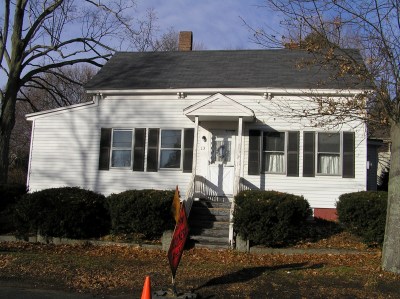 13 Liberty St., the Roberts House (c.1900) - The 1910 Ipswich map shows the owner of the house at 13 Liberty St. as D. A. Roberts.… Continue reading 13 Liberty St., the Roberts House (c.1900)
13 Liberty St., the Roberts House (c.1900) - The 1910 Ipswich map shows the owner of the house at 13 Liberty St. as D. A. Roberts.… Continue reading 13 Liberty St., the Roberts House (c.1900) 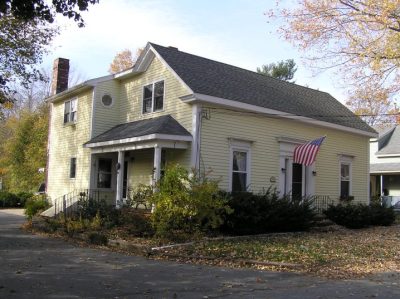 114 High Street, the Tibbets-Fowler House (1860) - In 1906 the High St. bridge was constructed which isolated this section of High St. from the rest of the roadway. This Greek Revival cottage is similar to several mid-19th Century houses in Ipswich. … Continue reading 114 High Street, the Tibbets-Fowler House (1860)
114 High Street, the Tibbets-Fowler House (1860) - In 1906 the High St. bridge was constructed which isolated this section of High St. from the rest of the roadway. This Greek Revival cottage is similar to several mid-19th Century houses in Ipswich. … Continue reading 114 High Street, the Tibbets-Fowler House (1860) 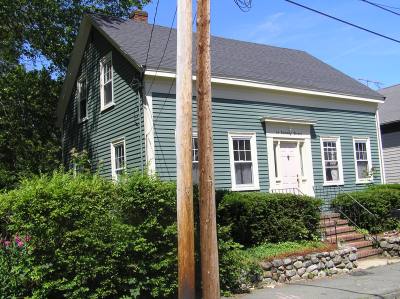 10 Summer Street, the Charles and Abigail Cotton / Moses Harris House (1838) - Moses Harris was the son of Thomas and Hannah (Soward) Harris and married Emily A. Cotton, age 18, the daughter of Charles and Abigail (Jewett) Cotton who owned several parcels in the area, probably including this house or lot.… Continue reading 10 Summer Street, the Charles and Abigail Cotton / Moses Harris House (1838)
10 Summer Street, the Charles and Abigail Cotton / Moses Harris House (1838) - Moses Harris was the son of Thomas and Hannah (Soward) Harris and married Emily A. Cotton, age 18, the daughter of Charles and Abigail (Jewett) Cotton who owned several parcels in the area, probably including this house or lot.… Continue reading 10 Summer Street, the Charles and Abigail Cotton / Moses Harris House (1838) 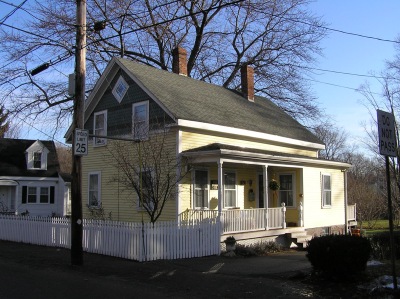 10 Liberty St., the Brown House (c. 1900) - The house at 10 Center Street is not in the 1884 Ipswich map, but appears in the 1910 Ipswich map under the name "C. Brown."… Continue reading 10 Liberty St., the Brown House (c. 1900)
10 Liberty St., the Brown House (c. 1900) - The house at 10 Center Street is not in the 1884 Ipswich map, but appears in the 1910 Ipswich map under the name "C. Brown."… Continue reading 10 Liberty St., the Brown House (c. 1900) Saltbox and broken back Capes
An early form of the high posted Cape was for the purpose of adding saltbox or “broken back” extensions. There are at least three rare examples in Ipswich.
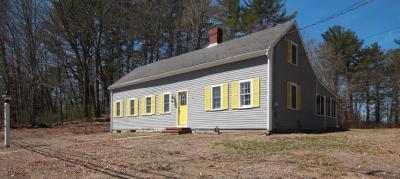 341 Linebrook Road, the Lot Conant house (1717, altered beyond recognition) - Architectural evidence, family history and deed research indicate that the oldest (center) part of this house was the home of Lot and Elizabeth Conant, the first of that family in Linebrook, constructed in 1717.… Continue reading 341 Linebrook Road, the Lot Conant house (1717, altered beyond recognition)
341 Linebrook Road, the Lot Conant house (1717, altered beyond recognition) - Architectural evidence, family history and deed research indicate that the oldest (center) part of this house was the home of Lot and Elizabeth Conant, the first of that family in Linebrook, constructed in 1717.… Continue reading 341 Linebrook Road, the Lot Conant house (1717, altered beyond recognition)  166 Linebrook Road, the William Lummus House (before 1832) - The present house at 166 Linebrook and the ancient Kozeneski barn that stood across the street were built by the Lummus family. … Continue reading 166 Linebrook Road, the William Lummus House (before 1832)
166 Linebrook Road, the William Lummus House (before 1832) - The present house at 166 Linebrook and the ancient Kozeneski barn that stood across the street were built by the Lummus family. … Continue reading 166 Linebrook Road, the William Lummus House (before 1832) 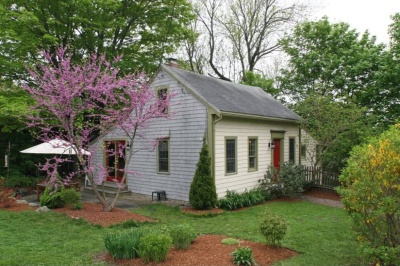 12 Warren Street, the Louisa Wells House (after 1700) - The Ipswich town assessors site indicates that this small house was constructed in 1700. The building was moved a short distance from Loney's Lane to face Warren St. at the beginning of the 20th Century,… Continue reading 12 Warren Street, the Louisa Wells House (after 1700)
12 Warren Street, the Louisa Wells House (after 1700) - The Ipswich town assessors site indicates that this small house was constructed in 1700. The building was moved a short distance from Loney's Lane to face Warren St. at the beginning of the 20th Century,… Continue reading 12 Warren Street, the Louisa Wells House (after 1700) Traditional Capes
Abbot Lowell Cummings wrote that “the hall/parlor layout with a central chimney serving both rooms was firmly rooted in East Anglia by the beginning of the seventeenth century. Carried across the Atlantic by the first colonists, the pattern has persisted through three and a half centuries and survives today in the American builder’s vocabulary of styles as Garrison, Colonial, and Cape Cod houses.”
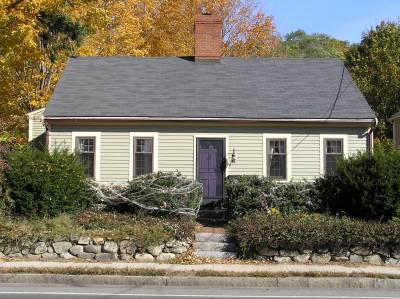 93 High Street, the John Cole Jewett House (1813) - John Cole Jewett bought the High Street estate of Josiah Martin by 1767, when he was mentioned in a deed of an abutter. Jewett's heirs sold the property in 1813 to David Lord. Stylistic evidence indicates that the present house was built shortly before the 1813 transfer.… Continue reading 93 High Street, the John Cole Jewett House (1813)
93 High Street, the John Cole Jewett House (1813) - John Cole Jewett bought the High Street estate of Josiah Martin by 1767, when he was mentioned in a deed of an abutter. Jewett's heirs sold the property in 1813 to David Lord. Stylistic evidence indicates that the present house was built shortly before the 1813 transfer.… Continue reading 93 High Street, the John Cole Jewett House (1813) 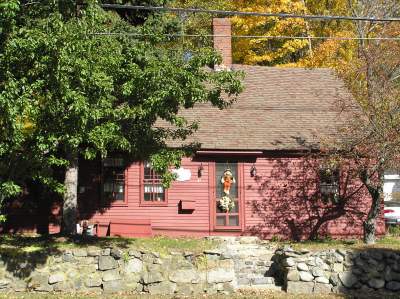 57 High Street, the Stone – Rust – Abraham Lummus House (c. 1750) - This cape saltbox was built by Robert Stone and has many original features, including vertical feather edge sheathing. William Rust bought the house in 1851 and his heirs occupied the estate into the 20th century. The separate workshop/barn on the northwest corner is believed to be a former cobbler shop, once connected to the house.… Continue reading 57 High Street, the Stone – Rust – Abraham Lummus House (c. 1750)
57 High Street, the Stone – Rust – Abraham Lummus House (c. 1750) - This cape saltbox was built by Robert Stone and has many original features, including vertical feather edge sheathing. William Rust bought the house in 1851 and his heirs occupied the estate into the 20th century. The separate workshop/barn on the northwest corner is believed to be a former cobbler shop, once connected to the house.… Continue reading 57 High Street, the Stone – Rust – Abraham Lummus House (c. 1750)  3 Newbury Road, the Philomen Foster House and barn (1787) - Philomen Foster was a deacon of the Linebrook Church and was a member of the Linebrook minutemen. This 18th century cape retains much of its historic character. … Continue reading 3 Newbury Road, the Philomen Foster House and barn (1787)
3 Newbury Road, the Philomen Foster House and barn (1787) - Philomen Foster was a deacon of the Linebrook Church and was a member of the Linebrook minutemen. This 18th century cape retains much of its historic character. … Continue reading 3 Newbury Road, the Philomen Foster House and barn (1787) 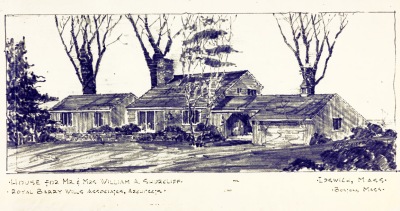 203 Argilla Rd., the William Shurcliff House (1963) - The house at 203 Argilla Rd. was designed in 1963 for William Shurcliff by architect Royal Barry Wills.… Continue reading 203 Argilla Rd., the William Shurcliff House (1963)
203 Argilla Rd., the William Shurcliff House (1963) - The house at 203 Argilla Rd. was designed in 1963 for William Shurcliff by architect Royal Barry Wills.… Continue reading 203 Argilla Rd., the William Shurcliff House (1963) 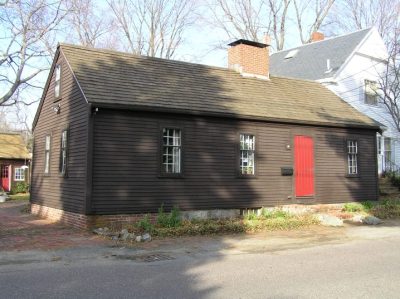 16 Mineral Street, Wise Saddle Shop (c. 1742 /1801) - Jabez Farley sold this lot to Joseph and John Wise in 1801, who probably built this small dwelling shortly thereafter. As late as 1832, this was the only house on Mineral Street.… Continue reading 16 Mineral Street, Wise Saddle Shop (c. 1742 /1801)
16 Mineral Street, Wise Saddle Shop (c. 1742 /1801) - Jabez Farley sold this lot to Joseph and John Wise in 1801, who probably built this small dwelling shortly thereafter. As late as 1832, this was the only house on Mineral Street.… Continue reading 16 Mineral Street, Wise Saddle Shop (c. 1742 /1801) Gambrel Capes
Prudence Fish wrote in Antique Houses of Gloucester, “The gambrel roofed story and a half cottages that dot the shoreline from Manchester to Cape Ann and all the way around our cape are the signature houses of Cape Ann… Strangely, there are only an occasional cottage here and there in (the rest of) Essex County. By 1800, the small vernacular houses once again were being built with pitched roofs although not a steep as in the first period. The new finishes reflected the Federal period and no more gambrel roofed cottages were built.”
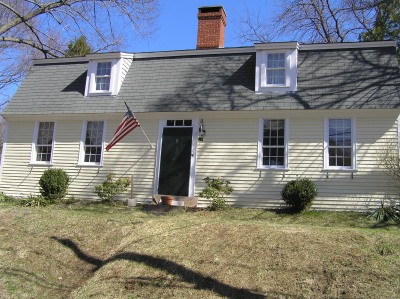 9 Woods Lane, the Merrifield-Wade House (1792) - Francis Merrifield, Jr. bought this corner lot from his father in 1792 and built the gambrel cottage. Mary Wade, Jr., daughter of Col. Nathaniel Wade of Revolutionary War fame, bought the property in 1827. She bequeathed her estate to her nephew, Francis H. Wade. The house remained in the Wade family well into the 20th Century.… Continue reading 9 Woods Lane, the Merrifield-Wade House (1792)
9 Woods Lane, the Merrifield-Wade House (1792) - Francis Merrifield, Jr. bought this corner lot from his father in 1792 and built the gambrel cottage. Mary Wade, Jr., daughter of Col. Nathaniel Wade of Revolutionary War fame, bought the property in 1827. She bequeathed her estate to her nephew, Francis H. Wade. The house remained in the Wade family well into the 20th Century.… Continue reading 9 Woods Lane, the Merrifield-Wade House (1792)  48 Turkey Shore Road, the Nathaniel Hodgkins House (1720) - The house at 48 Turkey Shore Road is believed to have been built by Nathaniel Hodgkins in 1720 on land formerly owned by Daniel Hovey. The gambrel roof indicates early Georgian era construction. A 19th Century rear ell was removed in 2022 and replaced with a modern but compatible addition.… Continue reading 48 Turkey Shore Road, the Nathaniel Hodgkins House (1720)
48 Turkey Shore Road, the Nathaniel Hodgkins House (1720) - The house at 48 Turkey Shore Road is believed to have been built by Nathaniel Hodgkins in 1720 on land formerly owned by Daniel Hovey. The gambrel roof indicates early Georgian era construction. A 19th Century rear ell was removed in 2022 and replaced with a modern but compatible addition.… Continue reading 48 Turkey Shore Road, the Nathaniel Hodgkins House (1720) 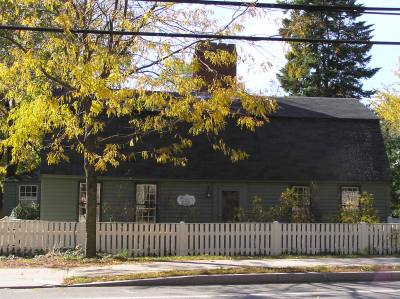 100 High Street, the Joseph Fowler House (1720 – 1756) - Joseph Fowler, a carpenter bought the lot in 1720. Records indicate that a house may have existed before Fowler obtained it. The house has a 1-1/2 story, gambrel roof with a central chimney and exposed “gunstock” posts.… Continue reading 100 High Street, the Joseph Fowler House (1720 – 1756)
100 High Street, the Joseph Fowler House (1720 – 1756) - Joseph Fowler, a carpenter bought the lot in 1720. Records indicate that a house may have existed before Fowler obtained it. The house has a 1-1/2 story, gambrel roof with a central chimney and exposed “gunstock” posts.… Continue reading 100 High Street, the Joseph Fowler House (1720 – 1756) 
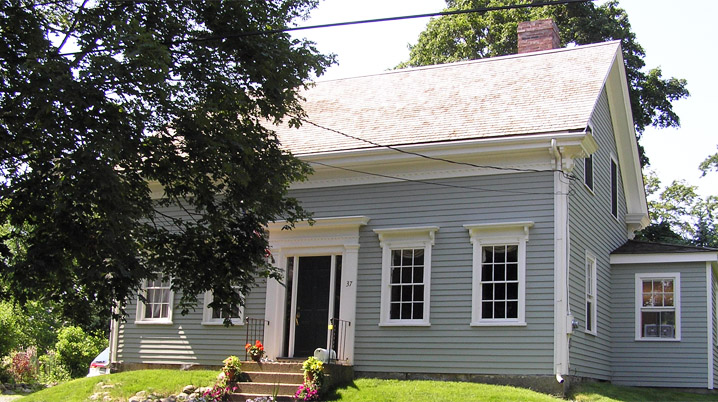

[…] you have colonial ties to Ipswich, MA, you might find an ancestor’s home: High-Posted Capes by Gordon Harris on Historic […]
[…] other feature of 857 Broadway that places it in the ante-bellum era is the high-post framing. This method of framing where the first-floor posts project into the second floor space, […]